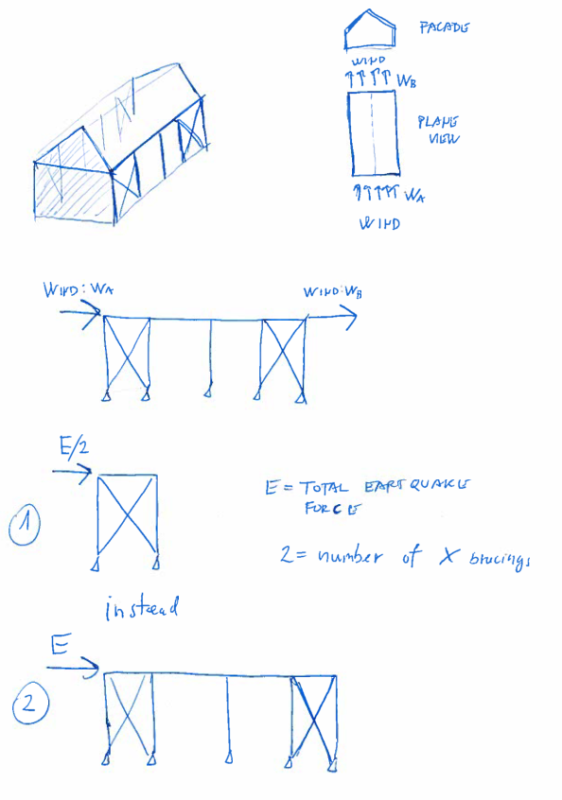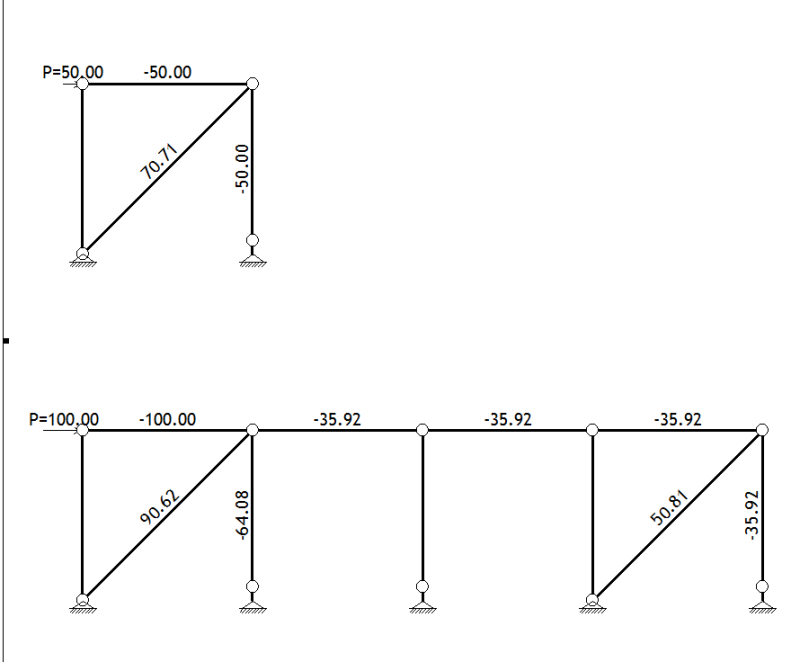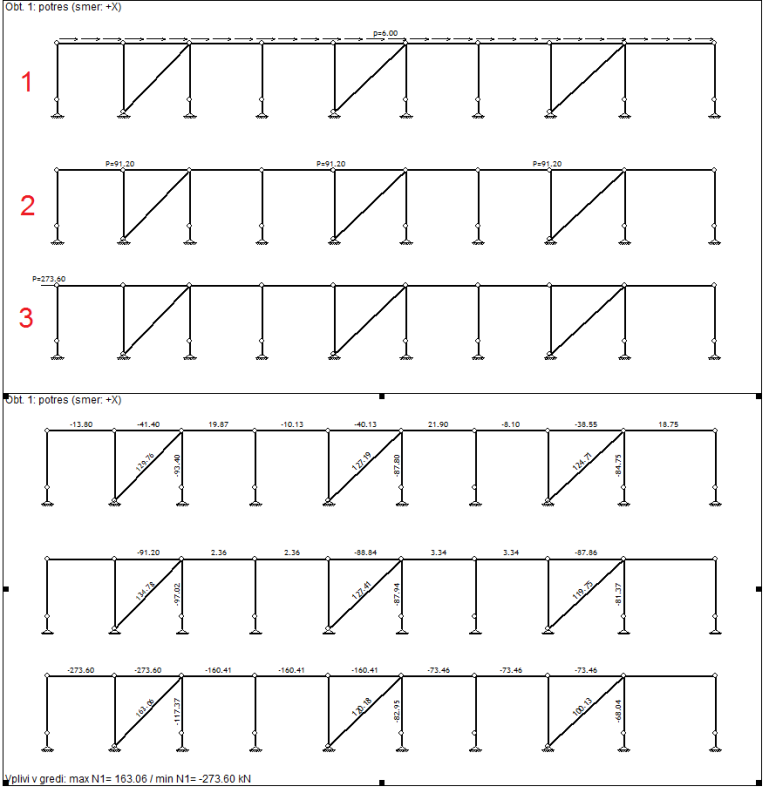mats12
Geotechnical
- Dec 17, 2016
- 181
Lets say we are dealing with a steel frame. Columns, beams at the top and X bracing (diagonals).
In FEM software I modeled it like this: all connections between elements are pinned and supports/base of columns are also pinned.
Since we have X bracing I only put tension diagonals in my model which is pretty standard.
Horizontal force (wind, earthquake) is transformed through beams (at the top of column) by compression forces to diagonals and columns and from there to supports.
Lets say that X bracing is in 3 vertical fields between columns. I have always thought that a total horizontal force (in this case 100 kN) on a frame is transfered equally between all 3 X bracings, but based on my FEM analysis results that is not the case. Why is that? Axial tension forces change as soon as I use different cross sections for beams/diagonals... Does that mean that horizontal forces are destributed based on a stiffness of a single braced field? Maybe I get different axial force in each diagonal because columns are not evenly apart?
Comments?
Looks like the first diagonal gets the most tension since compression axial forces in beams are the largest before first X bracing and then is gets smaller after that since part of the load goes through diagonal and column to support. I dont think thats how it is in reality... In a modle we put a total horizontal load at the beginning of a frame, but in a case of earthquake the total load wont realy start there in my opinion but it will be more eveny destributed along the whole frame...? What do you think? should I use 1/3 of total horizontal load and put 100/3 = 33,3 kN load on a single braced field instead of using a whole frame?

In FEM software I modeled it like this: all connections between elements are pinned and supports/base of columns are also pinned.
Since we have X bracing I only put tension diagonals in my model which is pretty standard.
Horizontal force (wind, earthquake) is transformed through beams (at the top of column) by compression forces to diagonals and columns and from there to supports.
Lets say that X bracing is in 3 vertical fields between columns. I have always thought that a total horizontal force (in this case 100 kN) on a frame is transfered equally between all 3 X bracings, but based on my FEM analysis results that is not the case. Why is that? Axial tension forces change as soon as I use different cross sections for beams/diagonals... Does that mean that horizontal forces are destributed based on a stiffness of a single braced field? Maybe I get different axial force in each diagonal because columns are not evenly apart?
Comments?
Looks like the first diagonal gets the most tension since compression axial forces in beams are the largest before first X bracing and then is gets smaller after that since part of the load goes through diagonal and column to support. I dont think thats how it is in reality... In a modle we put a total horizontal load at the beginning of a frame, but in a case of earthquake the total load wont realy start there in my opinion but it will be more eveny destributed along the whole frame...? What do you think? should I use 1/3 of total horizontal load and put 100/3 = 33,3 kN load on a single braced field instead of using a whole frame?




